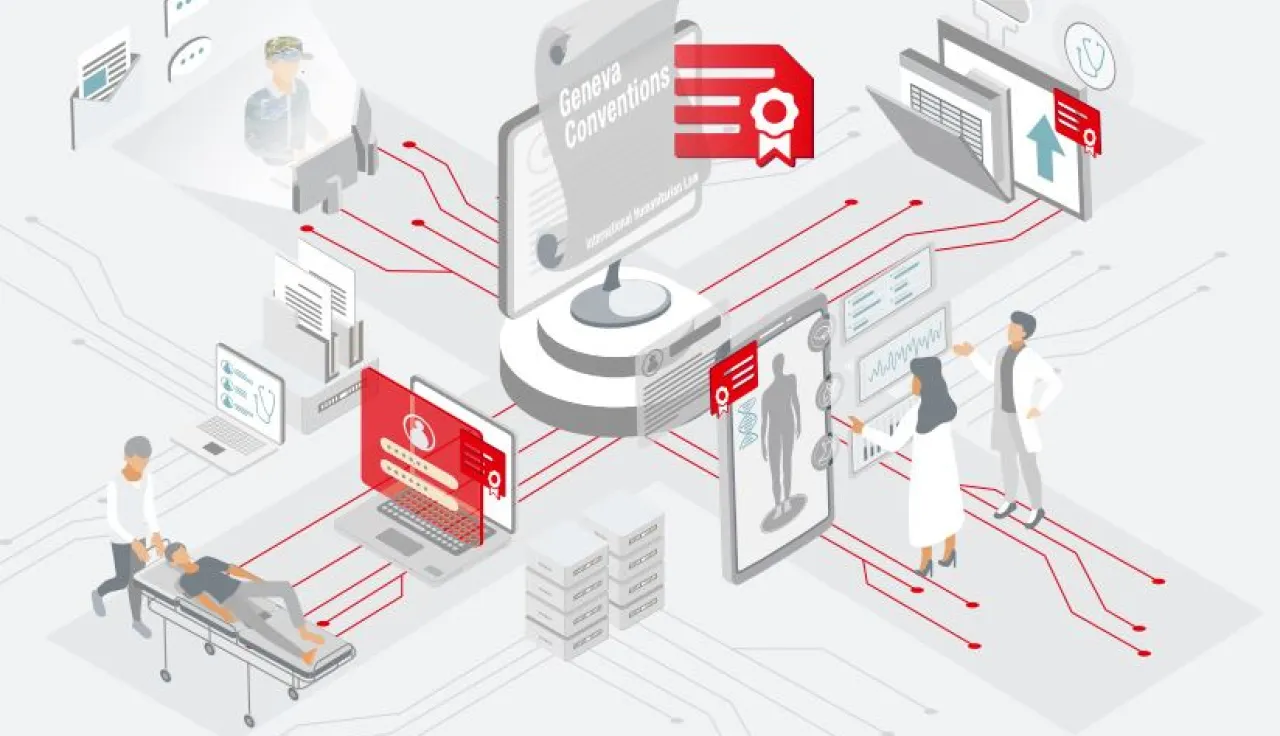The proposed digital emblem would signal to anyone trying to enter or attack those computer systems that the systems and data they hold are protected from any harm under international humanitarian law in times of armed conflict.
Following extensive research, the ICRC on 3 November launched a new report titled Digitalizing the Red Cross, Red Crescent, and Red Crystal emblems, that the proposed digital Red Cross emblem would bring protections and advantages for the digital infrastructure of medical and Red Cross offices.
The ICRC calls on states, members of the Red Cross and Red Crescent Movement, and IT experts from the medical, humanitarian, military, and security fields to join forces and develop concrete ways to protect medical and humanitarian services from digital harm during armed conflict.
With the digitization of society, cyber operations have become a reality of armed conflict. Our mandate to protect the lives and dignity of victims of armed conflict requires us to understand how these operations can cause harm. The ‘digital emblem’ is a concrete step to protect essential medical infrastructure and the ICRC in the digital realm,” said Robert Mardini, the ICRC’s director-general.
A "digital emblem" would make it easier for those conducting cyber operations during armed conflict to identify and spare protected facilities – just as a red cross or crescent on a hospital roof does in the real world. Cyber operators have signaled to the ICRC that additional markers such as a “digital emblem” can provide added protection in the "fog of digital warfare."
To make a digital emblem a reality, states need to agree on its use and make it part of International Humanitarian Law, alongside the three emblems currently in use. The ICRC has just launched a process to facilitate exchanges among states to ensure that medical and humanitarian organizations remain protected in times of armed conflict – online as well as offline.
For more than 150 years, protective emblems like the red cross have been used to convey a simple message: In times of armed conflict, those who wear the red cross or facilities and objects marked with them must be protected from harm. The obligation of all warring parties to respect and protect medical and humanitarian actors applies online as well. A growing number of militaries are developing cyber capabilities, meaning cyber-operations in armed conflict are likely to increase. The use of identifying markers in cyberspace can signal protection and avoid harm that puts medical facilities and critical humanitarian operations of the ICRC at risk.
Together with several partners, the ICRC has identified three possible technical solutions for a digital emblem:
- A DNS-based emblem. This would use a special label to link the "digital emblem" to a domain name (e.g., www.hospital.emblem). This would be a simple, human-readable "digital emblem" that identifies the protected system.
- An IP-based emblem. This type of emblem would require embedding semantics in IP addresses to identify both protected digital assets and protected messages traversing a network. This type of emblem would use part of the IP address, meaning a specific sequence of numbers, to identify both protected digital assets and protected messages traversing a network.
- A so-called ADEM system (Authenticated Digital Emblem) uses certificate chains to signal protection. In this approach, these certificates can be authenticated by different actors and communicated over different Internet protocols.
The ICRC is working with the Center for Cyber Trust (a joint endeavor of ETH Zurich and the University of Bonn), Johns Hopkins University, and the ITMO University of Saint Petersburg to develop the necessary technological solutions for identifying the digital infrastructure of protected facilities in cyberspace. In addition, the ICRC, together with the Australian Red Cross, brought together cybersecurity companies, former government officials, former cyber operators, medical and humanitarian ICT experts, representatives of other Red Cross Red Crescent National Societies experts with a background in criminology, and white-hat hackers to solicit their views on potential solutions and the risks and benefits involved.
For more information, please contact:
Christoph Hanger, ICRC Geneva, +41 79 731 04 03
changer@icrc.org
Crystal Wells, ICRC Geneva, +41 79 642 80 56
cwells@icrc.org




